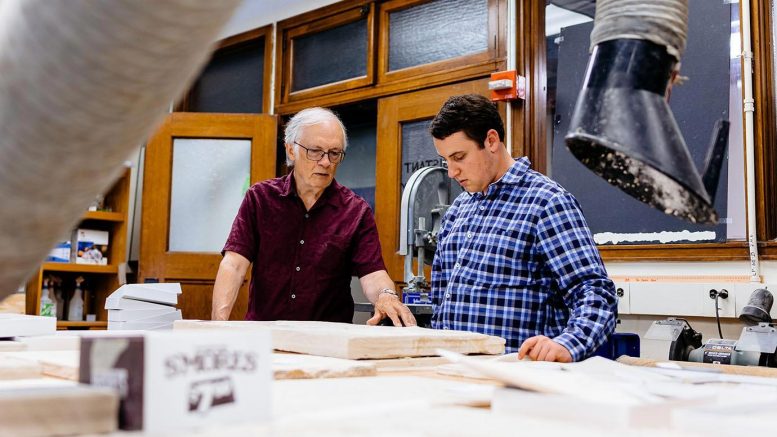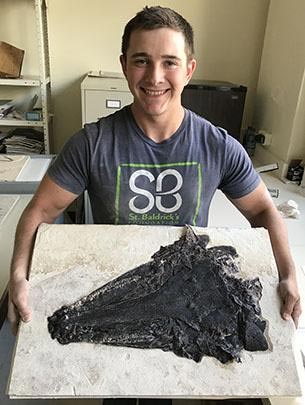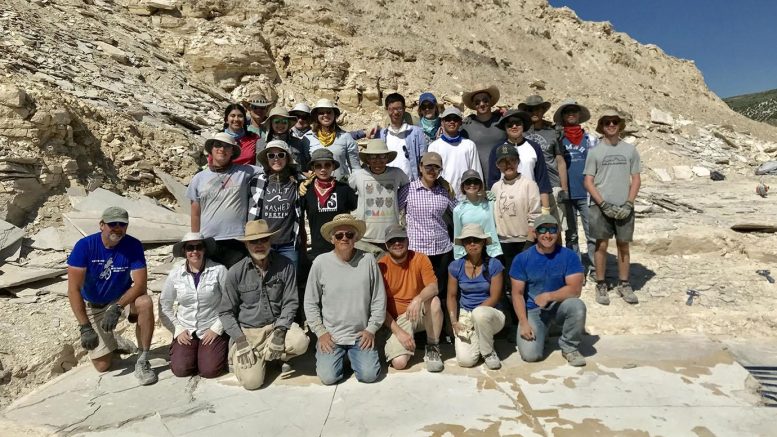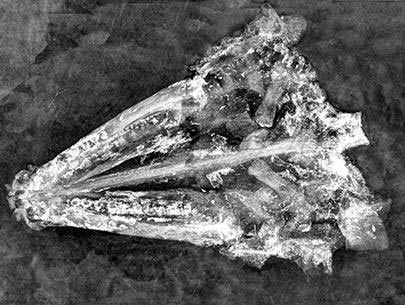
Rare skull of 8-foot-long gar discovered in University of Chicago-Field Museum paleontology course.
Each summer, the University of Chicago welcomes high school students from around the world for a unique course on paleontology, which culminates with two weeks of fieldwork spent hunting for fossils.

Credit: Lance Grande
In the 16 years he’s led the program, Lance Grande of The Field Museum in Chicago has helped students make all sorts of discoveries in Wyoming’s Green River Formation. This 52-million-year-old site is one of the richest fossil localities in North America, and this summer, one of his students unearthed one of the program’s most remarkable fish finds.
In past years of the Stones and Bones program, a rare find might mean a four-foot-long turtle or a stingray skeleton, preserved for millions of years in ancient sediment. But this summer, a California high school student dug up something truly special: a perfect skull of a gar fish that would have been at least 8 feet long. The skull, has the outward appearance as that of a crocodile, contained hundreds of small teeth and rows of large fangs, enabling it to become one of the lake’s top predators.
“Every year we find many truly remarkable fossils, including species new to science or specimens like this indicating new information about the ancient ecosystem. All of what we find has not seen the light of day for 52 million years,” said Grande, the Negaunee Distinguished Service Curator at the Field Museum and the leading authority on the Green River Formation.

High school student Gabe Robinson was splitting rocks at a dig site when Patrick Riordan, one of the program’s teaching assistants, noticed some bumps. “Lance came over, and he said, ‘I think there is something very interesting here. Everyone rushed over and crowded around. We kept going back to it, and finally the verdict was ‘’It’s a giant gar skull.’”
The team had X-rays done of the fossil at a local hospital to confirm it was a gar. According to Grande, the skull represents one of the largest specimens of its kind to be discovered. “If fossilization does happen, it’s often kind of fragmentary,” he noted. “The completeness of this skull is amazing.

Fifty-two million years ago, the Green River Formation was a subtropical lake system. Today, it’s a different extreme: a high, dry mountain desert 7,200 feet above sea level where there is usually snow from late September through May. Summer temperatures often reach into the mid-80s, with the night-time temperatures dropping into the 30s or 40s. Yet Stones and Bones students are dedicated paleontologists, even when camping on a butte in the thin mountain air—not least because the remains of the beautifully preserved fossil flora and fauna buried beneath them. “It’s a whole Early Eocene community locked in stone,” Grande said.
The discoveries that Stones and Bones students make in the field have always been informed by the context they gain while learning at the Field Museum in the first half of the program. In true UChicago spirit, the coursework fluctuates between theory and practice—ranging from anatomy to evolutionary biology, preparing students for “why we bother to go out there and collect stuff every year,” Grande explained.
Now, Robinson and Riordan’s discovery will be part of a living library of 30 million cataloged specimens from around the world at the Field, where it can support future research on aquatic life in the Eocene.
As Robinson reflects, it was “an amazing experience to finally work like a paleontologist, rather than just gathering the knowledge, taking a course and watching a documentary. To actually do it was just amazing.”